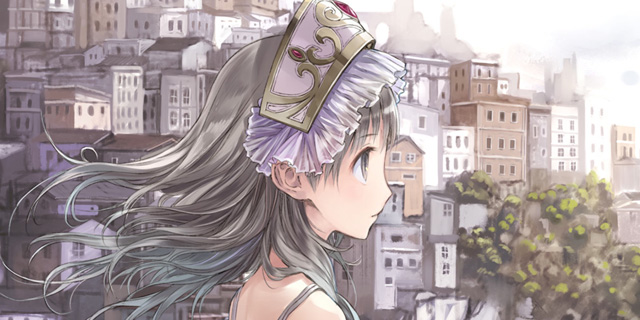
Atelier Totori is a somewhat different kind of Japanese RPG. While most RPG protagonists are roaming the world trying to prevent its destruction, Totori is roaming the countryside simply looking for her mother. While others are plotting the downfall of the government, Totori is licensed by the government to explore the world.
Unlike a majority of games these days, the story in Atelier Totori takes a back seat to the exploration and character interactions. It takes place five years after the events of its predecessor, Atelier Rorona, and the government has set up a fully-sponsored method of signing people up to explore the wilderness throughout the country of Arland. Totori’s mother was one of the first people to sign up as an adventurer, but she’s been completely out of contact with her family for years now. Thus, Totori wants to become an adventurer to find her. The story and interactions between characters are always lighthearted and sometimes humorous.
The gameplay consists of exploring various environments from caves to fields to lava-covered mountains, synthesizing new items and materials, and fighting monsters. The environments are full of monsters and gathering points for collecting materials. The synthesis, or alchemy, portions are made up of reading books full of recipes, and then using the various materials you’ve gathered, or created, to make even more expensive/important items and materials. These can be used for everything from creating new and better equipment, to story items, to various battle usable items. The thing that makes the alchemy portion so interesting is the fact that everything in the game has a set of traits that can be chosen from during synthesis. This allows you to add preferable traits, such as fire-dampening to armor, a speed/defense/attack boost to your accessories or even an MP or HP boost on your equipment. As for the combat, well, it’s the standard turn-based fare you’d expect. They don’t do anything special with it, except that only alchemists can use items during battle. Everyone else learns various technical skills that they use instead.
The graphics are very sharply-drawn and detailed, more so with the characters and monsters than the environments. The style is very pleasing to the eyes and lends itself well to the atmosphere that Gust is trying to create in the game. As for the voice acting, there are two different tracks to choose from: the English translation or the original Japanese. It’s definitely nice to have the option. The soundtrack itself is nice, but nothing special.
The only real downside we found was the lack of a good inventory system. In a game where you will be actively gathering and creating hundreds of items, the lack of a good system for sorting and searching your inventory is a big issue.
The Atelier series has always flown under the radar, but it continues to impress in many ways. If you’re looking for a good RPG that doesn’t take itself too seriously, this one comes highly recommended.
Pros: Sharp and detailed graphics, enjoyable story that doesn’t take itself seriously
Cons: Poor inventory management



















